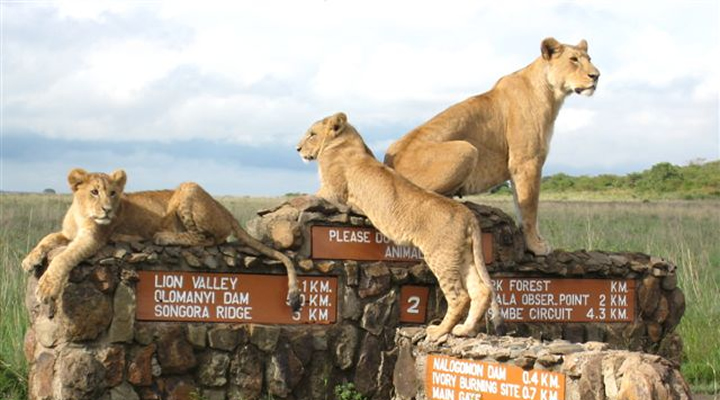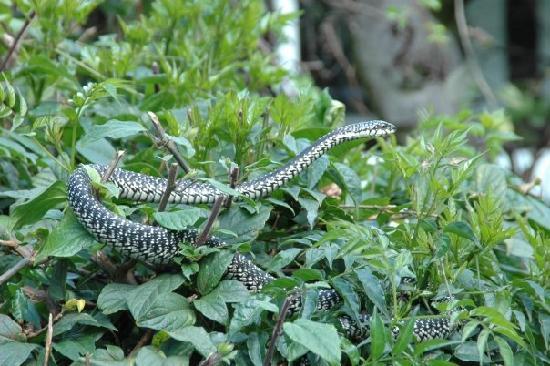Nairobi Day Tours and Excursions:
The Giraffe Centre
African Fund for Endangered Wildlife Kenya limited (AFEW (K) LTD) also known as the Giraffe Centre was founded in 1979 by the late Jock Leslie- Melvile, a Kenyan citizen of British descent and his wife the late Betty Leslie Melvile an American citizen. Jock’s extra ordinary vision of creating an educational institution in conjunction with rescuing the endangered Rothschild giraffes resulted in the present day Giraffe Centre that has become a World famous Nature Education Centre. Guests can visit the centre, interact and feed the giraffes daily between 0900 and 1700Hrs.
The endangered Rothschild giraffe breeding programme started with the inception of the Giraffe Centre back then in 1979. The giraffes breed naturally in an approximate 120 Acreage of land and the young calves born at the centre are introduced back into the wild at the age of 2years. The giraffes at the centre are closely observed and monitored by AFEW staff and when need be their natural diet is supplemented with Lucern Grass, salt blocks and carrots. Ever since the breeding started, the centre has handled over 50 Rothschild Giraffes and most of them have been introduced back into the wild in selected Kenya’s protected areas.
The Karen Blixen Museum
Karen Blixen Museum was once the centre piece of a farm at the foot of the Ngong Hills owned by Danish Author Karen and her Swedish Husband, Baron Bror von Blixen Fincke. Located 10km from the city centre, the Museum belongs to a different time period in the history of Kenya. The farm house gained international fame with the release of the movie ‘Out of Africa’ an Oscar winning film based on Karen’s an autobiography by the same title.
The Museum is open to the Public every day (9.30 am to 6pm) including weekends and public holidays. Guided tours are offered continuously. A museum shop offers handicrafts, posters and postcards, the Movie ‘Out of Africa’, books and other Kenyan souvenirs. The grounds may be rented for wedding receptions, corporate functions and other events.
The Museum was built in 1912 by Swedish Engineer Ake Sjogren. Karen and her husband bought the Museum house in 1917 and it became the farm house for their 4500 acre farm, of which 600 acres was used for coffee farming. Their marriage failed after eight years and in 1921 the Baron moved on and left the running of the farm to Karen. Karen lived at the house until her return to Denmark in 1931.
The Karen Blixen house meets three of the customary criteria for historical significance. First, it is associated with the broad historical pattern of European settlement and cultivation of East Africa. Second, it is associated with the life of a person significant to our past as the home of Baroness Karen Blixen from 1917 -1931. As such, it served as the setting and basis of herwell known book Out of Africa, written under the pseudonym Isak Dinesen and as a gathering place for other well-known personalities of the period. Third, the building embodies the distinctive characteristics of its type, period and method of construction. The house’s architecture is typical of late 19th century bungalow architecture, including the spacious rooms, horizontal layout verandas, tile roof and stone construction typical of scores of residences built throughout European suburbs of Nairobi in early decades.
Bomas of Kenya
Bomas of Kenya offers Kenya in miniature! Situated 10km from Nairobi city centre, and about 1 km past main entrance of the game-filled Nairobi National Park, Bomas of Kenya lets you see the wonderful diversity of cultures that make up this fascinating country. At Bomas different aspects of Kenyan culture are displayed including living styles, crafts, music and dancing.
The word Bomas was derived from “Boma”-a Swahili word for enclosed homestead and there are now many different “Bomas”, each one representing one of Kenya’s major ethnic groups. You cannot afford to miss the most exciting traditional dances and acrobatic show which start at 2.30pm to 4.30pm during weekdays and 3.30pm to 5.15pm weekends and public holidays.
The Daphne Sheldrick Orphanage
For over 25 years Kenya-born Daphne Sheldrick lived and worked alongside her husband David, during which time they raised and successfully rehabilitated many wild species. Daphne Sheldrick’s involvement with wildlife has spanned a lifetime, and she is now a recognized International authority on the rearing of wild creatures and is the first person to have perfected the milk formula and necessary husbandry for infant milk-dependent Elephants and Rhinos.
Since the death of her husband, Daphne and her family have lived and worked in the Nairobi National Park, where they have built the David Sheldrick Wildlife Trust and its pioneering Orphans Project, into the global force for wildlife conservation that is today.
At the heart of the David Sheldrick Wildlife Trust conservation activities is the Orphans’ Project, which has achieved world-wide acclaim through its hugely successful elephant and rhino rescue and rehabilitation program. The Orphans’ Project exists to offer hope for the future of Kenya’s threatened elephant and rhino populations as they struggle against the threat of poaching for their ivory and horn, and the loss of habitat due to human population pressures and conflict, deforestation and drought.
To date the David Sheldrick Wildlife Trust has successfully hand-raised over 150 infant elephants and has accomplished its long-term conservation priority by effectively reintegrating orphans back into the wild herds of Tsavo, claiming many healthy wild-born calves from former-orphaned elephants raised in our care.
Nairobi National Park – “The World’s Wildlife Capital”
A short drive out of Nairobi’s central business district is the Nairobi National Park. Wide open grass plains and backdrop of the city scrapers, scattered acacia bush play host to a wide variety of wildlife including the endangered black rhino, lions, leopards, cheetahs, hyenas, buffaloes, giraffes and diverse birdlife with over 400 species recorded. Visitors can enjoy the park’s picnic sites, three campsites and the walking trails for hikers.
Nairobi City Seeing Tour
Nairobi was founded in 1899 and was handed capital status from Mombasa in 1905. Nairobi is popularly known as the “Green City in the Sun”. It is currently the 4th largest city in Africa and the most populous city in East Africa, with an estimated urban population of 4 about million people.
Attractions in Nairobi include the modern city centre, the Nairobi city market, parliament buildings, Kenyatta International Convention Centre, The 7th memorial park bombast site, the Nairobi railway station museum, Masai markets where you can buy some beadwork & carvings, Nairobi Snake Park and the National Museum where displays of flora and fauna of Kenya are found, including the evolution.
Nairobi Snake Park
The Nairobi Snake Park is one of the National Museums of Kenya attractions and is located adjacent to Nairobi National Museum. Here you will find cobras, puff adders, mambas and the African-Rock python (non-poisonous), crocodiles, the American alligator, fresh water terrapins and tortoise.
Snake identification service is also provided. Visitors to the snake park get to enjoy the exhibits of reptiles, fish and succulent plants. Nairobi snake park tour is open daily (including public holidays) from 09:30 Hours – 18:00 Hours.
Nairobi Railway Museum
The Nairobi Railway Museum is adjacent to Nairobi railway station. Containing exhibits from the defunct East African Railways, it was opened in 1971 by East African Railways and Harbours Corporation. It is today operated by Kenya Railways. The Nairobi Railway Museum is a place so filled with history that it seems almost haunted.
Here, time has stood still for decades, since the last steam locomotives huffed their way across the country and came to roost here, gathering rust.
The museum has in the past offered jaunts on the old trains, giving patrons the experience of now-dated train travel. It exposes the background of the Kenya-Uganda railway line, aptly nicknamed the Lunatic Express, whose construction is believed to have cost more than 2,500 lives through tropical diseases, murderous heat, and man-eating lions.
In many ways, walking through the museum is like travelling through the whole stretch of that period in Kenya, starting with the annexation of Kenya as a British protectorate, and later colony, to the freedom struggle and independence.







